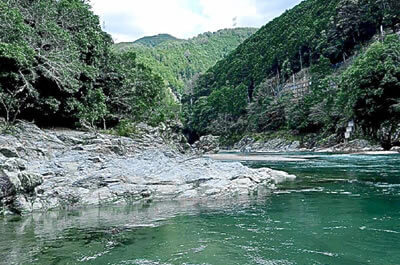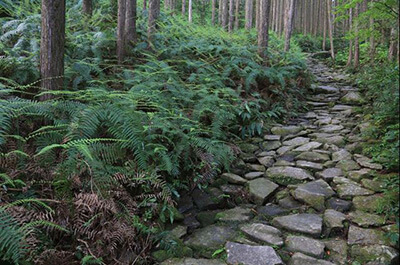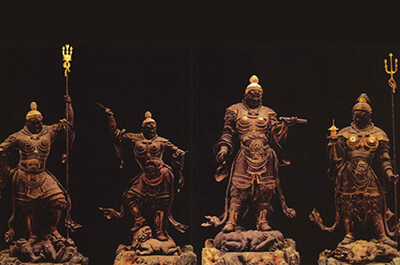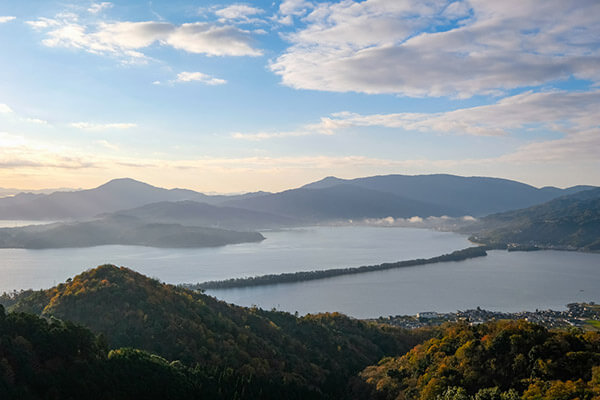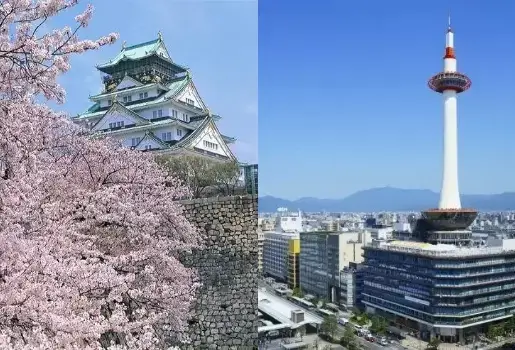STORY

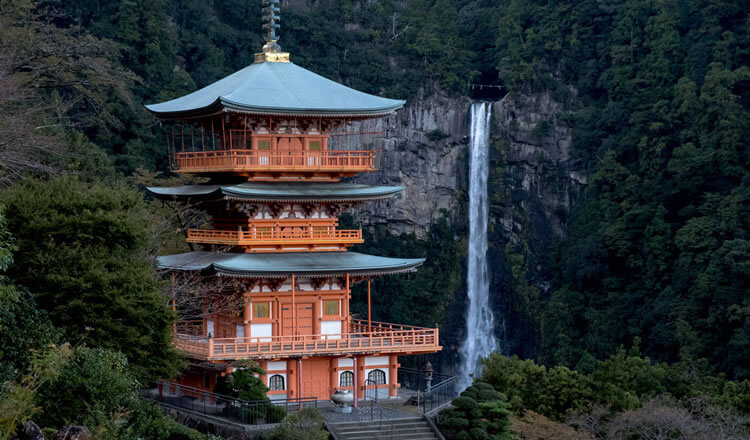
The Great Kii Peninsula, A Walking Tour of Mysterious Power Spots
The Kii Peninsula is Japan's largest peninsula. Since ancient times it has been considered by people living in the Kansai region to contain many power spots. The area currently called the "Kii Peninsula" is an area south of the "Middle Tectonic Line", the fault running east and west in the part of Japan that is comprised of the Mie, Nara, and Wakayama prefectures. The Japanese government has designated this the "Kii Area". In other words, the Kii Peninsula is south of the Kansai metropolises of Kobe, Osaka, Kyoto, and Nagoya. This large area is currently attracting attention because there is renewed interest in the idea that in this geographic area there are "Oku" (deep inside or hidden) sources of strong and mysterious power.
One of these is located in Kumano. Kumano is believed to be the burial place of Izanami (the female deity who gave birth to Japan and the sun, the moon, and the storm gods). This is discussed in the Jindaiki chapter of the "Nihon-shoki (the oldest chronicles of Japan: a record of ancient times of Japan)". It was a mountain worship site, and has been known for over a millennium as a place for Shugendo discipline. Shugendo is a form of mountain asceticism that arose in Japan, which incorporates Shinto and Buddhist concepts. In the late Heian period (the 10th & 11th centuries), the spread of the Amida religion caused Kumano to be considered one of the "Pure Lands" and it became a regular practice for Japanese emperors to make pilgrimages to Kumano. Because of this trend, many people began to make the trip from Kyoto to Kumano. The trails of pilgrims were so dense that it reminded people of columns of ants, and so this came to be called: "the ants' visit to Kumano". Medieval writers commented on the pain these pilgrims endured and their ruggedness in the face of this adversity.
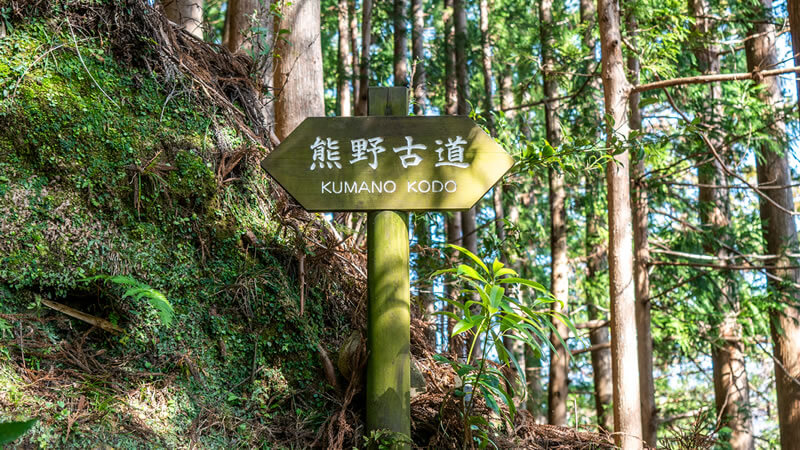
The road they followed has become a World Heritage Site. In the whole world, there are only two pilgrimage routes registered as World Cultural Heritage sites: The pilgrimage route of Santiago de Compostela (registered in 1993) and "The Sacred Sites and Pilgrimage Routes in the Kii Mountain Range" (registered in 2004).
Strangely, both of these paths on the two extreme ends of the Eurasian great continent, were filled with pilgrims in the 11th century, though their origins were quite different. They shared the common features that both routes inspired religious devotees to demonstrate their physical endurance, spirituality, and willingness to risk death. The road to Santiago is one of three famous Christian pilgrimages and can be reached by four different routes. On the other hand, there are five different routes by which to reach Kumano. One is a famous worship route used by former emperors to pass along the Nakahechi path. The others are the route that passes along the Ohechi seaside, a route through the mountains of Kohechi, a route going west from Iseji; and a route from Osaka to the Kumano along the Kiiji road. Walking any of these routes is very arduous. Again, we ask, why did two pilgrimage routes develop at the same time (in the 11th century), although they are on different continents, and in spite of the fact that the people making these pilgrimages did not know about each other's existence? And, why are these two pilgrimage routes attracting the interest of people, now, in the 20th century? There's a big mystery, here. It is also notable that 2004 was the year that "The Sacred Sites and Pilgrimage Routes in the Kii Mountain Range" were registered as World Heritage sites while that same year, 2004, was a Great Festival Year at the Cathedral of Santiago de Compostela. Six million pilgrims visited there during that year. These two places really seem to be on two strange but related paths.
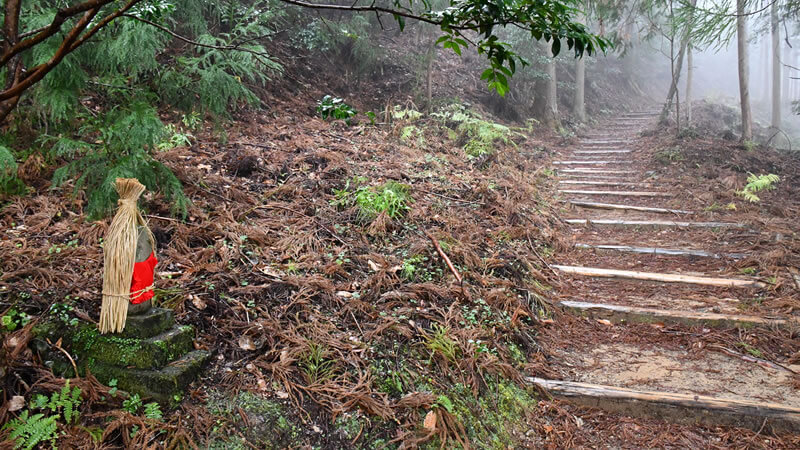
Nevertheless, we can't help but wonder, why did pilgrims head along the road to Santiago, to the westernmost point of Europe, and for the southernmost point from Kyoto to Kumano Kodo? I asked some young men who came from the United States to walk 800 km in order to follow the road from northern Spain to Santiago, "Why did you walk it?" They answered, "Everything on this road teaches us that it is important to actually walk it. Yes, there is a destination, but getting to the end point is not all there is to it." "Walking it" also involved the process of developing themselves, even including struggling on the long, steep roads. In Japan, we call this kind of discipline "Shugyo" (training). Why do we have an urge to undergo training?
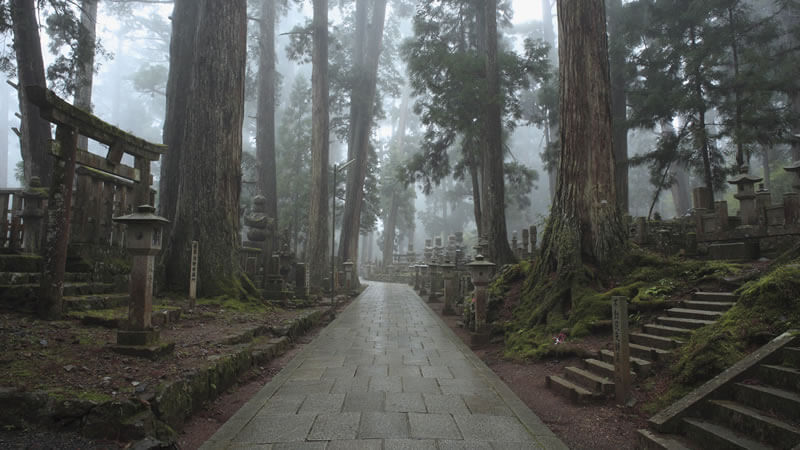
Kumano Kodo is included in the "World Heritage: the sacred sites and Pilgrimage Routes in the Kii Mountain Range". It is said that Kumano was meant to be a hidden place. Among Shinto and Buddhist places of worship, there are often places called "Okunoin". Because this word contains "Oku" ("deep inside" or "hidden"), it seems that there must be something important involved. At the same time, while it seems that we are approaching the part that will be the last section of the pilgrimage, it becomes harder and harder to finish that very last bit. That is why it is called "Oku" (hidden). In another sense, maybe it's like a turning point along the way. Let's think about the fact that the Pacific Ocean lies south of the Kii Peninsula. The sea unites one piece of land with the others that are out there in the world beyond. There is a story told, that a person who came by sea to Kumano long, long ago saw something that seemed to glow. It is said that what he saw was Nachi Waterfall. This 133 meter high waterfall should be visible from the Kumano Sea, and this may have been the basis for the mystery associated with this place.
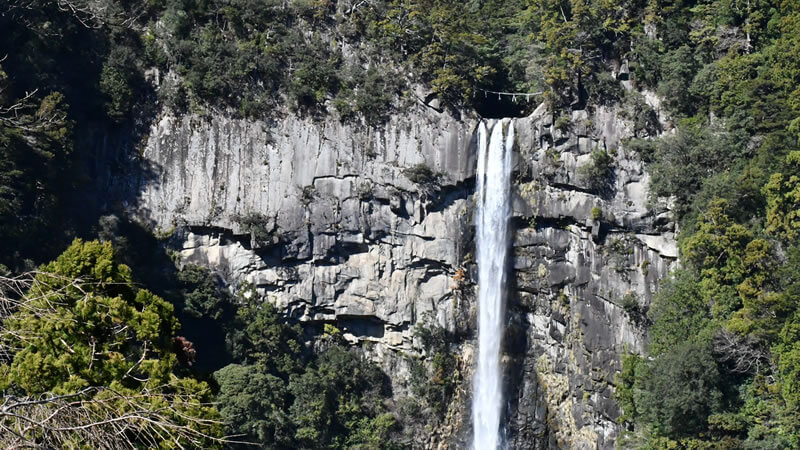
Also, north of Kumano lies "Koyasan". This is the location of a place, opened by Kukai (the founder of a Buddhist sect) in the 9th century. It is one of the places that is sacred to Japanese Buddhism. It is also included in the "World Heritage: the Sacred Sites and Pilgrimage Routes in the Kii Mountain Range", and it is visited by many tourists. The Koya Pilgrimage Route and the Kongobu-ji Head Temple precincts are included among the World Heritage sites. There are other major walking-related locations here. One of the most famous pilgrimage activities in Japan is to walk the pilgrimage course called the "88 Shikoku Pilgrimage sites". This involves walking and taking lessons at 88 temples on Shikoku island, involving a total hiking distance of 1,100 to 1,400 km. People who have concluded the "expiration of the terms of a vow" visit Okuno-in on Koyasan as a way of expressing thanks, and they present a book of stamps certifying they have visited all 88 temples to achieve complete fulfillment of their vow. Koyasan is a place where many Buddhists go for training and a place that pilgrims visit to certify their "walking" experience. This may be one of the signs that the Kii Peninsula has "Oku" (or "mystery" or "something hidden").
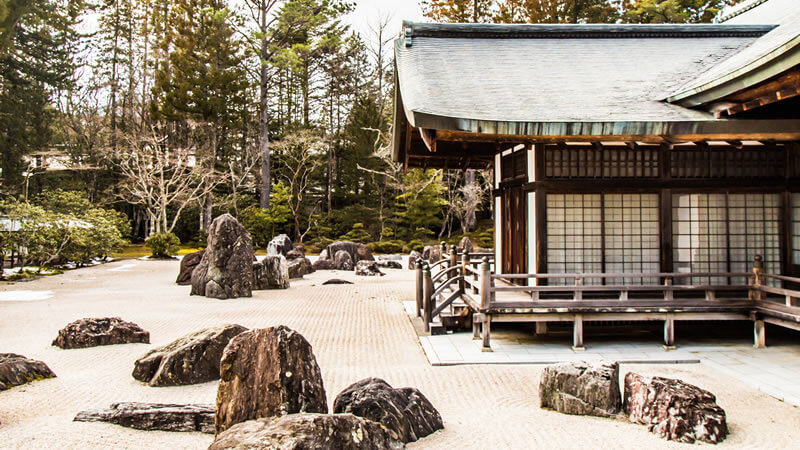
We note that the "Ise" Shrine is on the eastern side of the Kii Peninsula. Ise Shrine is dedicated to the Imperial Family's deity, Amaterasimasu Susume Omikami, and over many centuries has been the object of many pilgrimages. As guides to the Kumano pilgrimage, the Kumano mentors took care of travel arrangements, accommodation and prayers, etc. In the same way, the mentors of Ise Shrine also play an active part in supporting visits to that Shrine. It is said there have been mentors there since the Kamakura era (1185 -1333), so they have a long history. In the Edo era (1603 -1868) they were definitely travel guides, who provided services like leading people and arranging inns for stops along the pilgrimage journey, popularly called "Ise Mairi". Many people from all over Japan walked toward Ise, and the mentors provided powerful support to these pilgrims. Here, you can see that there were major routes called the "walks toward the Kii Peninsula". That is to say, there were Ise in the east, Kumano in the south, Koyasan in the west, and so on. There are still many places to walk on pilgrimages. You can see that much the Kii Peninsula contains what might be called power spots.
However, the ending point, wherever it is, should also be a starting point. Often, the reason we visit a power spot is not to reach a conclusion, but rather to have a place from which to start moving forward from there. At the end of a particular pilgrimage or "walking discipline" there must be something that marks a new start toward what is up ahead. The places that will provide the power for such a new start, and still leave us with questions because they are places of mystery, seem to be exactly like those in the heart and deep inside the Kii Peninsula.
Recommend Route
-
Koyasan Route

Marcy
Marcy is a professional content creator, blogger and editor from the Americas, focused in the luxury adventure travel industry showcasing remote exotic destinations around the world. -
Kumano Kodo Route

Robert
Robert is a professional photographer, journalist, and social media influencer from England, dedicated to capturing the rich cultural and natural beauty of the world.
